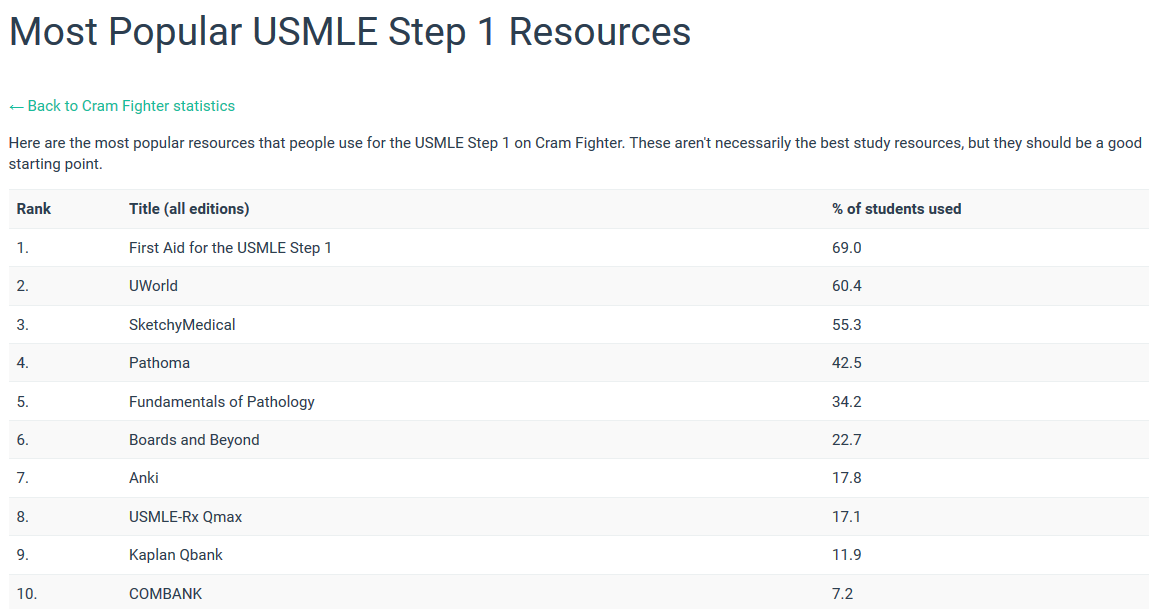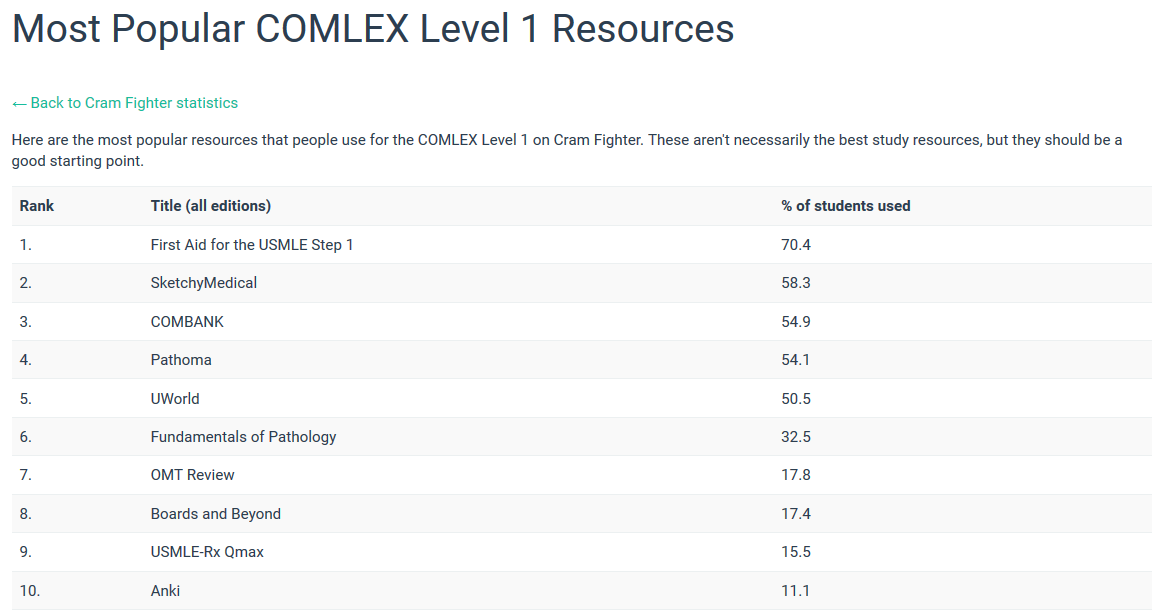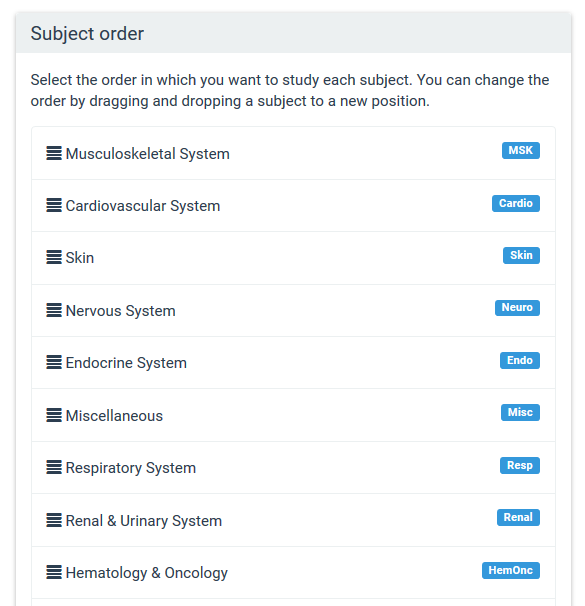Strategies for Building a 3-Month USMLE Step 1 Study Plan
- by
- Mar 09, 2018
- Reviewed by: Amy Rontal, MD
Here’s how to prepare for the USMLE Step 1 or the COMLEX Level 1 in just 3 months
Our statistics show that June is the most popular month for Cram Fighter customers to take both the USMLE Step 1 exam or the COMLEX Level 1 exam. With that in mind, the month of March roughly marks 3 months out. Now is a good time to start planning a 3-month Level 1 or Step 1 study plan. Below are some suggestions for strategies you can apply to your personalized Step 1 or COMLEX Level 1 study plan.
NBME Practice Tests
Three months from your exam is a great time to take a practice test. Your best bet is likely the series of NBME Practice Exams (official name of the NBME tests is the CBSSA, or Comprehensive Basic Science Self-Assessments). You should take an NBME Practice Exam before you start studying for Step 1 or Level 1, so that you can see your baseline score. Then, you can see how your score improves with additional practice exams, once you start studying.
In addition to setting your baseline score, the first NBME practice exam will allow you to see which subjects you’re weakest in, since the performance feedback from the NBME includes your individual performance profile that highlights areas of strength and weakness. Knowing this information can help you to organize your study strategy to focus on those weaker areas more strongly.
Keep taking practice exams over the course of your 3 months so that you can monitor your progress (watching your scores improve) and using the performance feedback to continue improving on your weaker subjects.
Blueprint’s Med School Study Planner supports Practice Test scheduling. Build your custom schedule today.
Resource Selection
How do you know what resources to study for the Step 1 or Level 1? And how many to choose? One piece of advice we can give is to steer clear of choosing too many resources. This will overburden you Too many resources may lead you either to get bogged down in minor details or to study material that is too general. Instead, try to choose resources to complement each other.
The right strategy is to choose a good mix of Qbank questions, book resources, flashcards, and videos. Our customers typically add 4 to 6 different resources to their Step 1 or Level 1 study plans in Cram Fighter. This approach will give you the exposure to the different types of materials, presented in different ways, that can help with your understanding of the difficult concepts. One Cram Fighter user told us that he chose resources, like Pathoma, in order to fill in the gaps after studying First Aid.
We actually keep track of the resources we see students adding to their study plans. For Step 1, these are the most frequently added Step 1 resources as of Feb. 2018:
(View Cram Fighter’s current statistics on the most popular Step 1 resources people use.)

These are the most frequently added COMLEX Level 1 resources as of Feb. 2018:
(View Cram Fighter’s current statistics on the most popular COMLEX Level 1 resources people use.)

Many students start with the “UFAP” resources (Uworld, First Aid, and Pathoma) and then add resources from there. You can use this approach, and supplement UFAP resources with what your school provides.
Building Your 3-Month Schedule
After you’ve taken your first CBSSA, established a baseline score, and identified your weakest areas, you are ready to build your schedule. We see many students using Cram Fighter’s Study Blocks feature. With this feature, students can create schedules in Cram Fighter that are dedicated to certain resources, or devoted to periods of light vs. heavy studying. We like to think of Study Blocks as “schedules within your overall schedule.”
For example, when building your 3-month study schedule, you can use study blocks in Cram Fighter to create one study block for going through questions from your Qbank. Then, you can build a second study block once your Dedicated Study period begins, incorporating your books and other resources.
Here’s a link to a 12-week sample study schedule in Excel and explanations of how each sample schedule was built.
Finally, one more useful feature in Cram Fighter is the ability to sort your study tasks. As mentioned above, practice exams give you a way to identify what subjects you are weaker in. When you’re building your study plan in Cram Fighter, you can actually customize the order of your study subjects and prioritize certain subjects or resources. With this feature, you may want to move weaker subjects higher in the priority list, so you attack those first.

About the Author
Erica Forrette is the former Director of Marketing at Cram Fighter.









